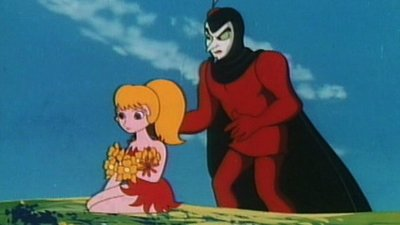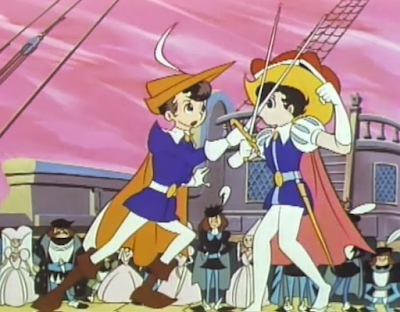Princess Knight Is the Most Progressive Anime You've Never Seen!
Princess Knight was referred to me as the anime that started the "shoujo" (girl-oriented) genre in Japan. That seems like a pretty big claim considering how immensely popular that genre has been over the years and the fact that I've never heard of this show. It came out in 1967, which was well before anime became popular in America. Upon watching it, I found it contained many similarities to one of my favorite anime series, Revolutionary Girl Utena. I thought Utena was pretty progressive for a '90s series, but I had no idea something similar had already been done all the way back in the '60s and had likely inspired it.
By today's standards, Princess Knight would probably be considered transgender or queer even though she has a male love interest. The show begins with an in-depth explanation of why she feels obligated to pretend she's a boy. As the daughter of a queen and king, she has a responsibility to inherit the kingdom of Silverland, whose law states that only a male heir can descend the throne. Her parents decided to raise her as a boy under the name Prince Knight so the people of Silverland would take her seriously as the heir. There's also a more supernatural reason she feels comfortable as a boy, which delves into some of the show's religious aspects that probably would never have been touched upon today. When the princess's soul was in Heaven waiting to be born, Choppy, a playful little angel who later becomes her sidekick, handed her a male-gendered heart before learning that God intended to make her female. Because of his mistake, he is later sent to Earth to assist Princess Knight on her adventures and find a way to make her accept her identity as a girl.
Nowadays, it is common for princesses to be physically strong and fend off evil, but back then, the only way for a princess to have daring adventures and exciting swordfights was by pretending to be a prince, and Princess Knight is just fine with that. She does all the things that a prince of that era would have done, including rescuing damsels and occasionally even fighting Satan. If one of the main characters is an angel sent by God, why not throw Satan in as a villain? Princess Knight's masculine traits are balanced out by Satan's feminine daughter, Zenda, who was one of my favorite characters in the show. Zenda becomes fast friends with Princess Knight because she secretly wants to be good despite being pressured by her parents to be evil. I wish the show had devoted more episodes to her story because I found it very interesting.
The main conflict for the first half of the show is Princess Knight trying to hide her identity as a girl from two scheming nobles, Sir Nylon and Duke Duralumin, who want the throne for themselves and believe the easiest way to get it is by proving the prince is really a princess and is therefore ineligible for the throne. What makes this show stand apart from something that might be created today is that Princess Knight is pretty feminine despite regularly pretending to be a boy. Her character design is similar to Disney's Snow White, which makes sense since she was the only Disney Princess with short black hair in 1967, and her American voice dub sounds like an impression of Adriana Caselotti, which makes it a little hard to swallow that so many people believe she's a boy at all. Princess Knight occasionally wears long dresses as disguises and is often described as beautiful by those who see her in them. One of these disguises attracts the interest of a prince named Frank, who suspects Prince Knight is a girl and attempts to court her but is met with scorn until she is able to reveal her true identity later.
I was so pleased to learn about this forgotten anime from before my time because it was a lot of fun! Most episodes are inspired by a well-known fairy tale, myth, or legend, so it was fun trying to figure out the inspiration behind them and to see how the series put its own spin on it. It's also cool that there was a princess character back in the '60s who didn't need to be rescued and went on all kinds of heroic adventures. You should check this series out if you're looking for something that feels both nostalgic and progressive at the same time. I can see how it set the standard for many shows that have come out since then, including Nickelodeon's similarly titled Nella, the Princess Knight.














Comments